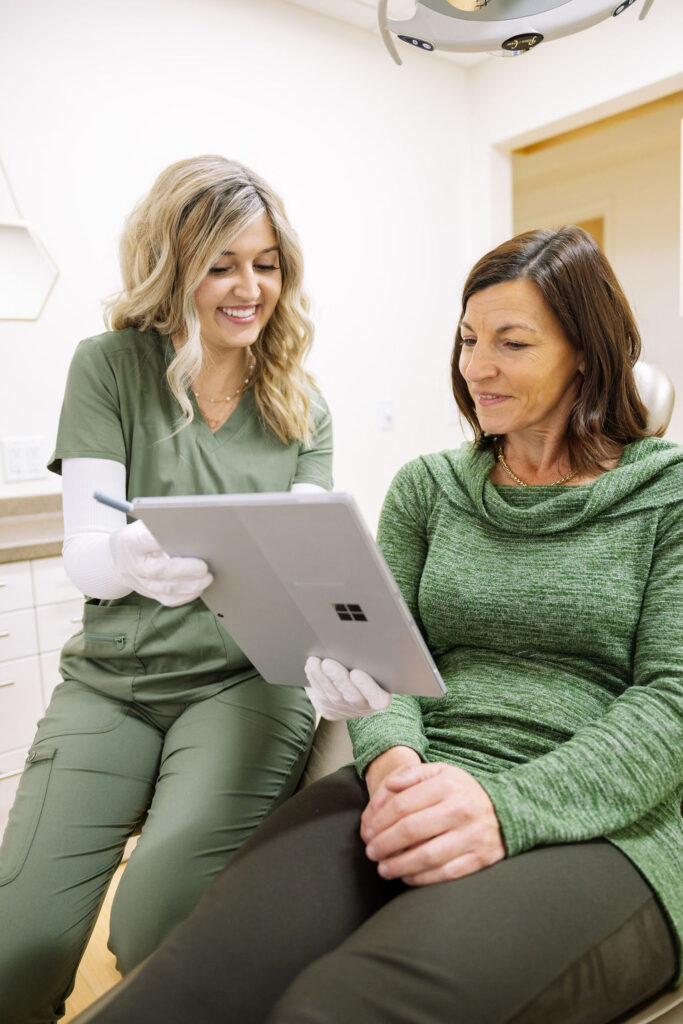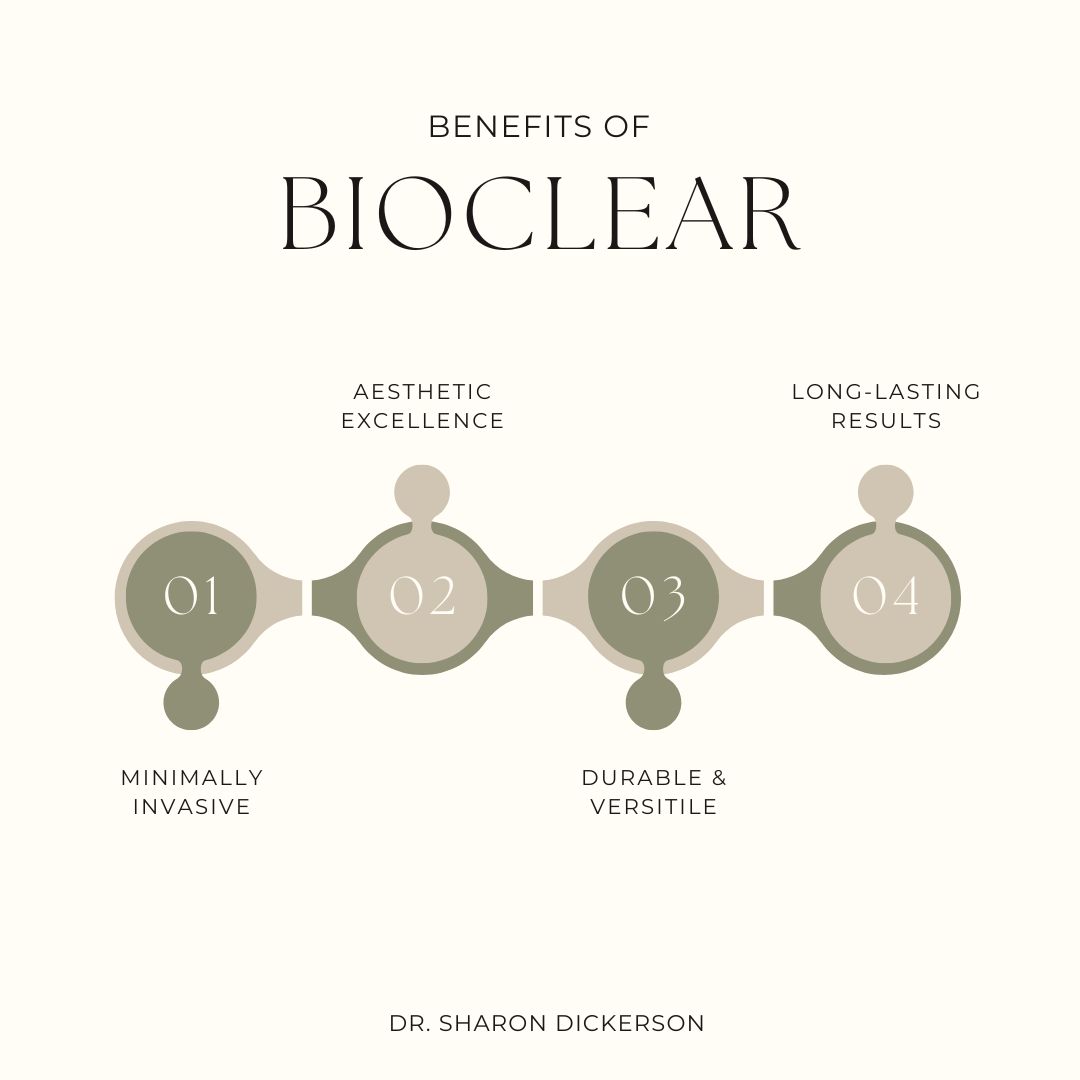Introduction
In recent years, the Bioclear dental treatment method has gained popularity as an alternative to traditional fillings. Promoted for its ability to provide natural-looking results and durability, Bioclear has captured the interest of many seeking solutions for their dental needs. However, like any dental procedure, it’s essential to understand both its benefits and drawbacks thoroughly before making a decision. In this article, we’ll delve into the potential disadvantages of Bioclear treatment, offering an honest and balanced perspective to help you make an informed choice.
Before discussing its drawbacks, let’s briefly overview what Bioclear entails.
What is Bioclear?
Bioclear is an innovative technique for smile rejuvenation and can also be implemented in the treatment of cavities and black triangles. It uses a resin material to fill cavities and restore damaged teeth. It often allows for a more minimalist approach, often times saving more of the natural tooth structure than would be possible with a traditional crown or filling.
The ceramic material is touted as being more biocompatible than amalgam fillings which contain mercury. Bioclear fillings are also marketed as being tooth-colored and more aesthetic than amalgam’s metallic appearance.
Technical Details About Bioclear
The Bioclear method takes a unique approach compared to traditional dental fillings. Here are some more specifics on the technical aspects:
Bioclear Material Composition
The filling material itself is a biocompatible liquid ceramic made up of several components:
– Silicon oxide particles suspended in a liquid polymer matrix
– Calcium and phosphate compounds to mimic natural tooth minerals
– Initiator chemicals that allow the liquid to quickly harden when exposed to a special curing light
Bonding and Hardening
Once the tooth is prepared, a liquid ceramic is applied directly to the tooth surface. A specialized curing light is then used to initiate a chemical reaction, causing the liquid to quickly harden into a solid ceramic filling within about 2 minutes. This hardened ceramic bonds not just mechanically but also chemically to the tooth through the calcium/phosphate components.
The end result is a strong, tightly bonded, and tooth-colored restoration that seals off the area of decay.
Comparison to Traditional Filling Alternatives
While Bioclear offers some advantages, it’s important to understand how it stacks up against other common filling materials:
Amalgam Fillings
Pros of Amalgam:
– Inexpensive and widely available
– Proven longevity, can last 10-15 years
– Simple procedure
Cons of Amalgam:
– Contains mercury which research shows is detrimental to health
– Dark metallic appearance
– Requires more aggressive drilling that removes healthy tooth structure
Composite Resin Fillings
Pros of Composite:
– Tooth-colored and aesthetic
– Bonds directly to tooth
– Relatively inexpensive
Cons of Composite:
– Less durable than Bioclear or amalgam, may last 5-7 years
– Requires meticulous technique by dentist to apply
– Can deteriorate or stain over time
Glass Ionomer Fillings
Pros:
– Minimal drilling and tooth preparation required
– Metal-free, tooth-colored material
– Great for temporary fillings
Cons:
– Not as durable or long-lasting as other options
– Contain fluoride which, research shows, can have negative effects on health
– Moisture sensitivity during application

Potential Drawbacks of Bioclear
While Bioclear has many benefits such as being metal-free, tooth-colored, and preserving more tooth structure, it also has potential drawbacks. The ideal choice will depend on your individual clinical situation and personal priorities.
Precise and Natural Dental Restoration
While the Bioclear method may come at a higher initial cost compared to traditional fillings, this advanced technique offers numerous long-term benefits that justify the investment. The proprietary biocompatible liquid ceramic material and specialized air abrasion process require extensive training and specialized equipment, contributing to the increased cost.
However, this cutting-edge technology allows for a truly metal-free, tooth-colored restoration that seamlessly blends with your natural teeth. The minimally invasive procedure preserves more of your healthy tooth structure, ensuring a conservative and long-lasting solution.
One of the key advantages of Bioclear is its extended longevity compared to traditional fillings. With proper care, Bioclear restorations can last for decades, potentially saving you from the need for frequent replacements and costly treatments down the line.
Furthermore, Bioclear can often serve as an alternative to full crowns, offering a more cost-effective and less invasive option in many cases. This makes Bioclear an ideal choice for those seeking a natural-looking, durable, and conservative restoration.
While the initial investment may be higher, the precise, biocompatible, and lasting nature of Bioclear restorations can provide exceptional value in the long run, both financially and in terms of preserving your natural dental structure.
Specialized Training Required
Only dentists who have completed the proprietary training course offered by the Bioclear company can provide this treatment method. This specialized training requires an investment of time and money from the dentist.
As a result, Bioclear providers may be less widely available in some areas, requiring more travel or wait times to receive this treatment compared to traditional fillings most dentists can provide.
Long Appointments
The Bioclear process can be more involved than standard fillings due to the artistic process required of the dentist upon application.
This extended time commitment can be difficult for some patients with busy schedules to accommodate.
Recent Research and Advancements
Recent studies are showing Bioclear to be stronger and healthier than traditional composites. The Bioclear Method and composites in general are healthier for both the tooth and the patient compared to amalgam fillings. Unlike older materials that can weaken tooth structure over time, Bioclear is designed to preserve more of the natural tooth while providing strength and longevity.
Not Ideal for All Situations
While Bioclear aims to preserve more tooth structure, it may not be recommended for every type of cavity or restoration needed.
For larger areas of decay or damage, conventional crowns or other traditional treatment may still be preferable over Bioclear fillings. Your dentist’s assessment will determine if you are a good candidate based on the extent and location of the work needed.
While Bioclear offers a unique approach to tooth restoration, some patients may benefit more from other modern options like laser dentistry. At Sharon Dickerson DDS, our Denver laser dentistry services provide a minimally invasive way to address issues such as gum contouring, decay removal, and even cosmetic refinements—often with less discomfort and faster recovery.
Ready to experience the benefits of advanced, natural-looking Bioclear fillings? Schedule your consultation with our Bioclear expert Dr.Sharon Dickerson today.

Weighing the Pros and Cons
For optimal dental health, understanding both the advantages and disadvantages of any treatment is crucial before making a decision. While Bioclear offers many potential benefits in terms of biocompatibility and tooth preservation, the fees, limited provider access, longer appointments, and lack of long-term studies are drawbacks to consider.
As with any dental treatment choice, having an open discussion with your dentist about your specific needs and priorities can help determine if Bioclear is ultimately the right option for you or if traditional fillings may be more suitable.
Worried about treatment discomfort or fear of the dentist? Many patients exploring conservative options like Bioclear also struggle with dental anxiety. Our trauma-informed care puts your comfort first—always. See how our Dental Anxiety Dentist services can help.
Remember: Your dental health is an investment, and it’s essential to prioritize both short-term results and long-term sustainability when considering treatment options like Bioclear.
Still unsure if Bioclear is right for your dental needs? Don’t risk making the wrong decision – schedule a free consultation with Dr. Sharon Dickerson, an experienced Bioclear provider, today!

